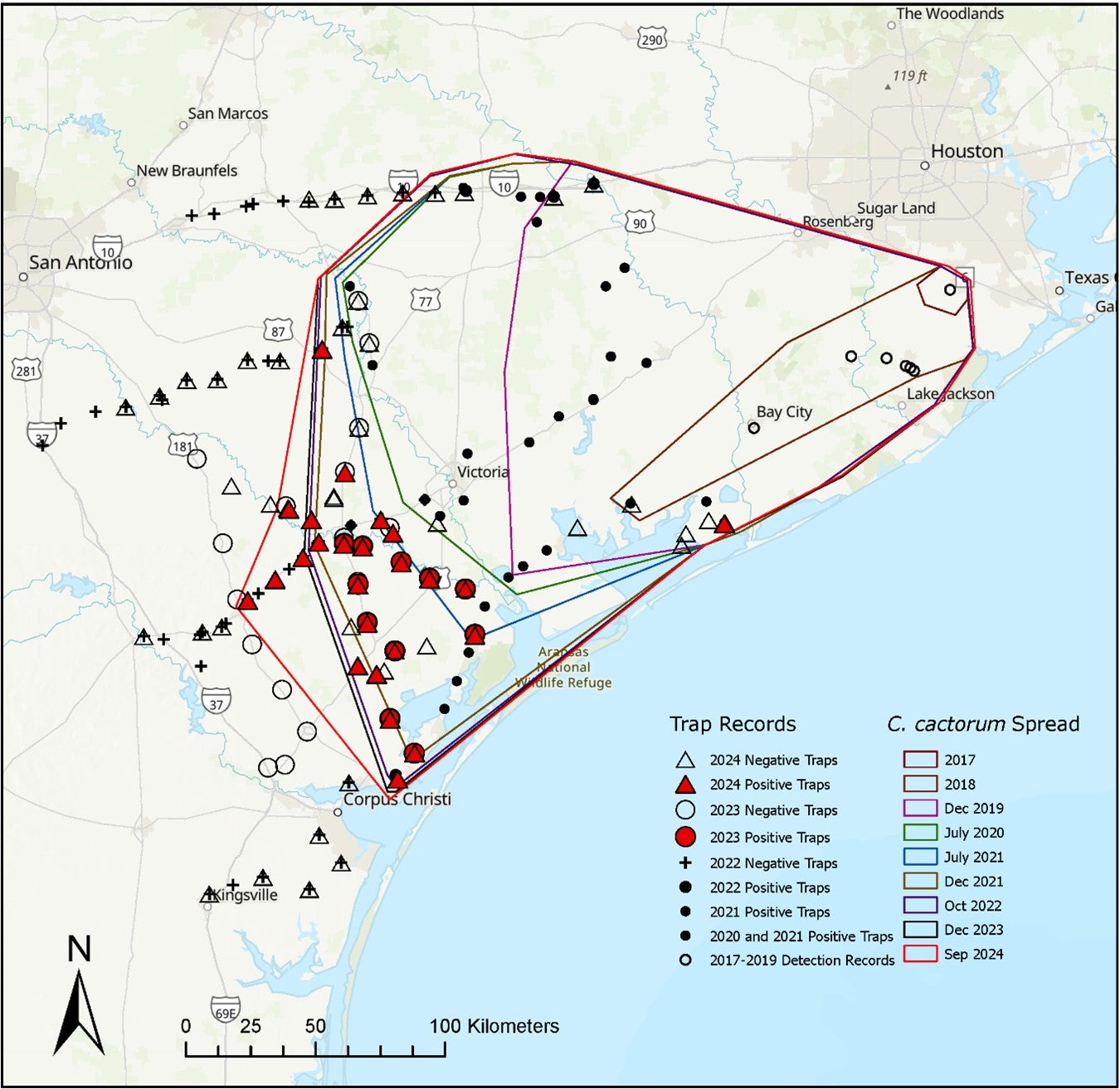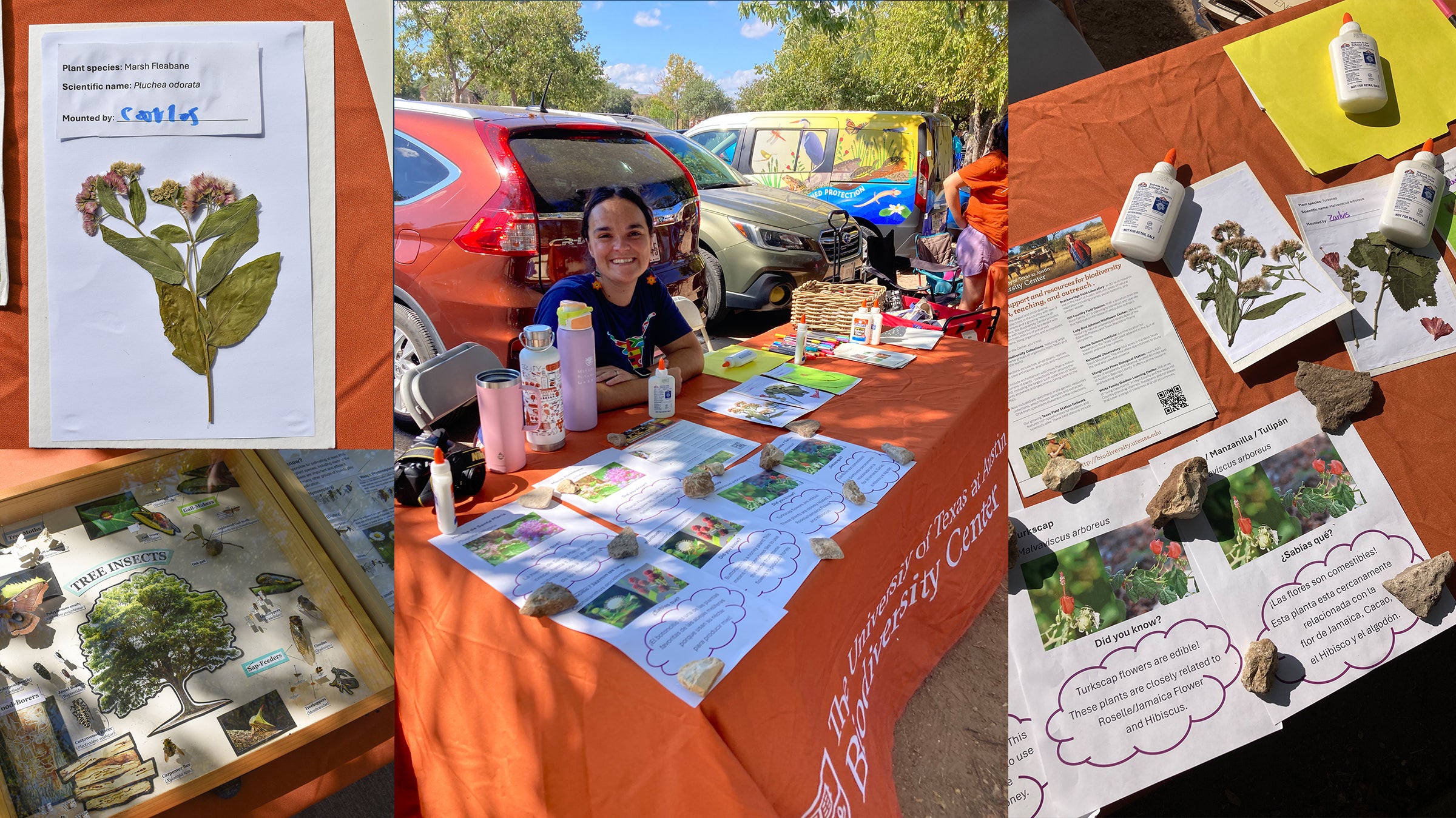
Prickly pear cactus are foundational species in Texas ecosystems and food webs. They support a vast diversity of livestock, native wildlife, arthropods, birds, and are the iconic poster child and state plant of Texas.
However, the invasive moth caterpillars (Cactoblastis cactorum) can decimate native Texas prickly pear, including the widespread species Opuntia engelmannii. A recent paper published in The Florida Entomologist by researchers at the Brackenridge Field Lab gives a major update on the status of this moth.
Colin Morrison, Postdoctoral Fellow with the Invasive Species Research Lab at BFL, answers some questions about what this means for Texas now and beyond.
What are some of the main takeaways from the research this paper dives into?
The paper was released in January of this year and at the time the research was completed in December 2023, the range of the moths was over 6.7 million acres across the Coastal Bend. As of December 2024, the cactus moth has occupied 7.3 million acres in Texas and is expanding into the central-southwestern parts of the state where prickly pear is a dominant landscape feature (see map below). We observed moths continuously from March to November every year from 2020 to 2024, with at least four distinct generations per year, which is more than anywhere else the moth is found on Earth. More annual generations facilitated population expansion rates as high as 30 miles per year during the peak population expansion between 2017 and 2021.
This study is an example of UT field station-based science that is impactful for many landowners, naturalists, conservation scientists, and citizens that value biodiversity.
Click on image to expand.
How does the disappearance of the prickly pear alter the ecosystem here in Texas?
The invasive cactus moth is an extremely effective defoliator of prickly pear. Damage can be so severe that entire sections fall off, killing large plants that provide shelter for other native plants, arthropods, wildlife, quail and other wild birds. Worse, their consumption of disconnected pads leads to fragmentation, turning large cactus into numerous, scattered small plants that offer poor cover and become a nuisance to landowners. Because of this, the cactus moth further decreases land quality in areas already dominated by carpets of prickly pear fragments.
Potential impacts include fundamental alteration of culturally and economically valuable Texas ecosystems that support tremendous biodiversity. In addition, the cactus moth is an existential threat to commercial prickly pear operations in Mexico where the enterprise was valued at over $200 million per year in 2022 for small farmers and cooperatives.
Can you give us a little historical context about this moth because it was not always seen in such a negative light?
These moths were once used to wipe out prickly pear that were introduced in Australia, where they eliminated 90% of prickly pear across millions of acres in just 10 years. It is important to remark that cactus moth biological control effectiveness was maximized in Australia because it occurred in conjunction with mass releases of North American cochineal bugs (Dactylopius) which targeted other vital systems of the cactus.
What sort of work is being done at the Invasive Species Lab at BFL to try to bring this species under control?
Our lab has participated in the development of a wasp parasitoid for safe, sustainable, biological control that will only target the cactus moth. Under the leadership of Larry Gilbert and Rob Plowes, this research program grew for 15 years in collaboration with researchers at the USDA, Florida Department of Agriculture and Consumer Services, Universidad Autónoma Agraria Antonio Narro (Mexico), and Universidad Nacional Quilmes (Argentina). Wasp releases along the southwestern invasion front and within the core of the cactus moth’s Texas range are expected to begin later this year.
This research was funded by the USDA, the Texas Ecolabs Program, the UT Contex Grant, and Lee & Ramona Bass Foundation.
For more information on how to identify native and invasive prickly pear enemies, see the Field guide to prickly pear cactus (Opuntia) sources of natural enemy damage in South-Central Texas.




